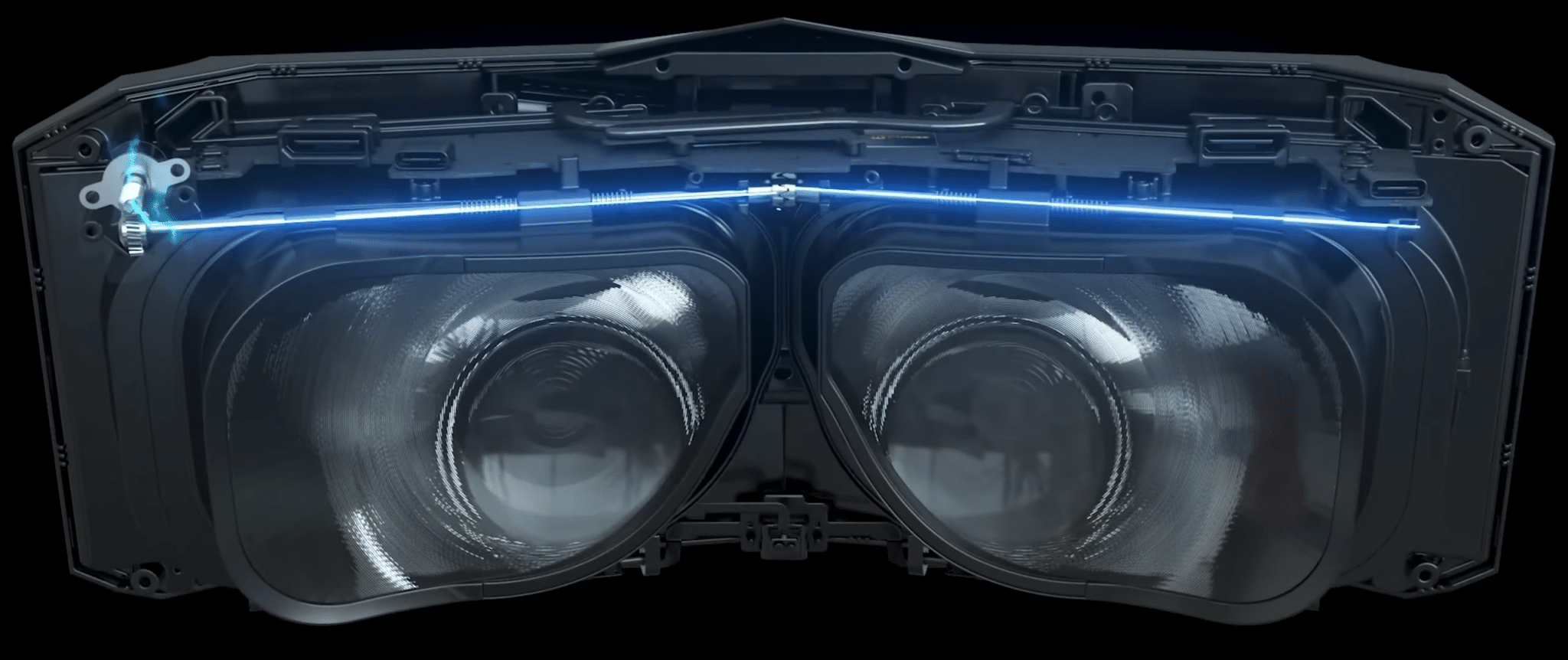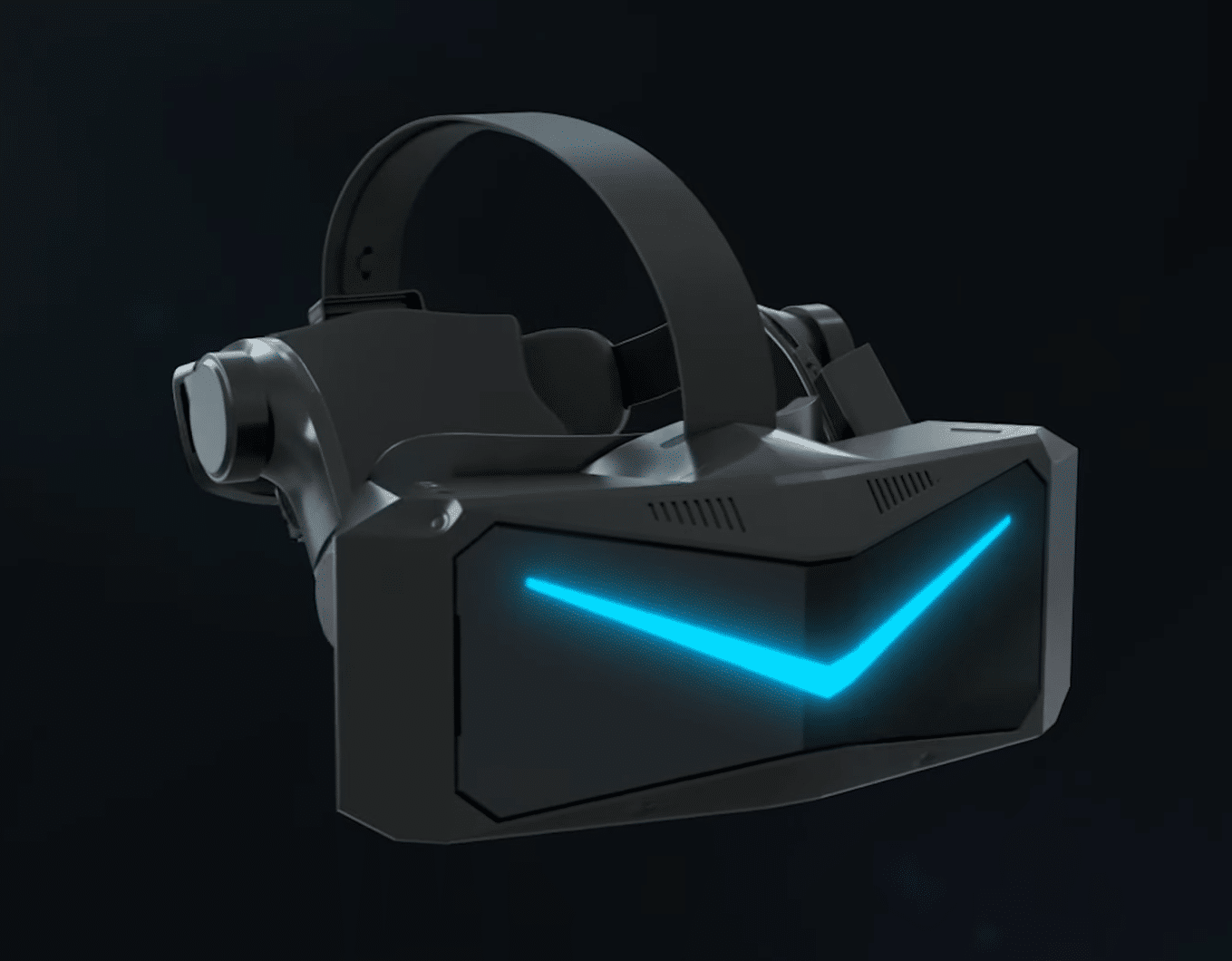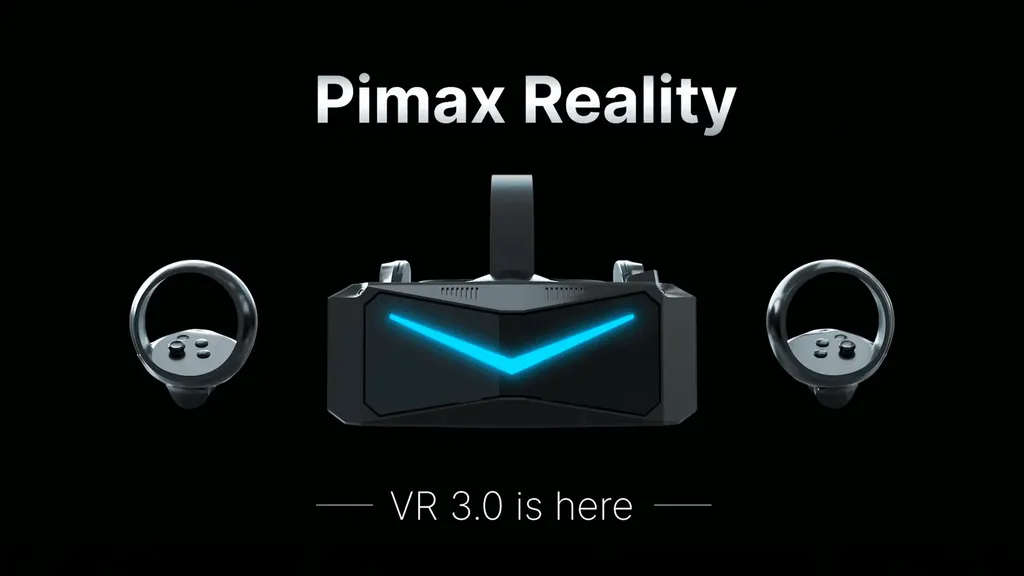Pimax just announced Reality 12K QLED, a future $2399 dual-mode VR headset the company claims will have near 6K per eye resolution and an astonishing 200 degree horizontal field of view.
Pimax says Reality will use dual 200Hz HDR LCD panels with Mini LED backlighting and a quantum dot layer. While traditional small LCD panels use a single backlight behind the entire display, Mini LED instead uses thousands of tiny LED elements, delivering contrast levels close to OLED – though with the tradeoff of some blooming. The quantum dot layer should deliver an extremely wide color range, which Pimax claims surpasses even OLED.
Pimax says Reality will use a compound lens design combining a fresnel and aspheric element to get the advantages of both. The company claims the geometric distortion seen in the peripheral view on its current products will no longer be present in Reality. The field of view is listed as 200 degrees horizontal and 135 degrees vertical – covering the majority of human vision.
Four cameras on the front edges of Reality are used for inside-out tracking of the headset and its Oculus Touch-like controllers – or your hands freely.
Through a partnership with Tobii it will have integrated eye tracking cameras, powering automatic lens separation adjustment and dynamic foveated rendering.

Pimax says an array of cameras on the bottom and sides of the headset also enable facial expression tracking and full body tracking. Fully standalone body tracking would be a first for the industry – this is something seen only in research papers so far.
Reality will support two separate PC VR modes. The standard method sends frames over an existing Wi-Fi network similar to Oculus Air Link or Virtual Desktop – though it’s unclear how well that will really work at this resolution. The high fidelity mode uses a fiber optic cable or dedicated WiGig transmitter for a much higher bandwidth connection, presumably sold separately.
If you don’t already own a high end gaming PC, Pimax plans to sell a console-like “VR Station”, a prebuilt PC with an integrated WiGig adapter which exclusively works with Pimax Reality headsets.

Reality will use the same Snapdragon XR2 processor as Oculus Quest 2. An extra cooling fan and dynamic foveated rendering mean it should outperform Quest 2, but rendering 4K frames while processing 11 cameras seems difficult to pull off.
In fully standalone mode, Pimax says Reality’s resolution is limited to below 4K per eye, the field of view is reduced to 150 degrees horizontal, and the refresh rate is capped at 120Hz. Pimax announced two standalone games, Ragnarok and Hyperstacks, while encouraging other interested developers to reach out.
Pimax claims Reality 12K QLED will start shipping in Q4 2022, with preorders opening in summer. Existing Pimax owners will be able to trade in their current headset for a preorder discount equal to the original purchase price.
However, Pimax has a long history of repeatedly failing to meet its deadlines and of shipping products without promised features. We strongly recommend exercising caution by waiting for reviews of the final hardware before placing an order.





























